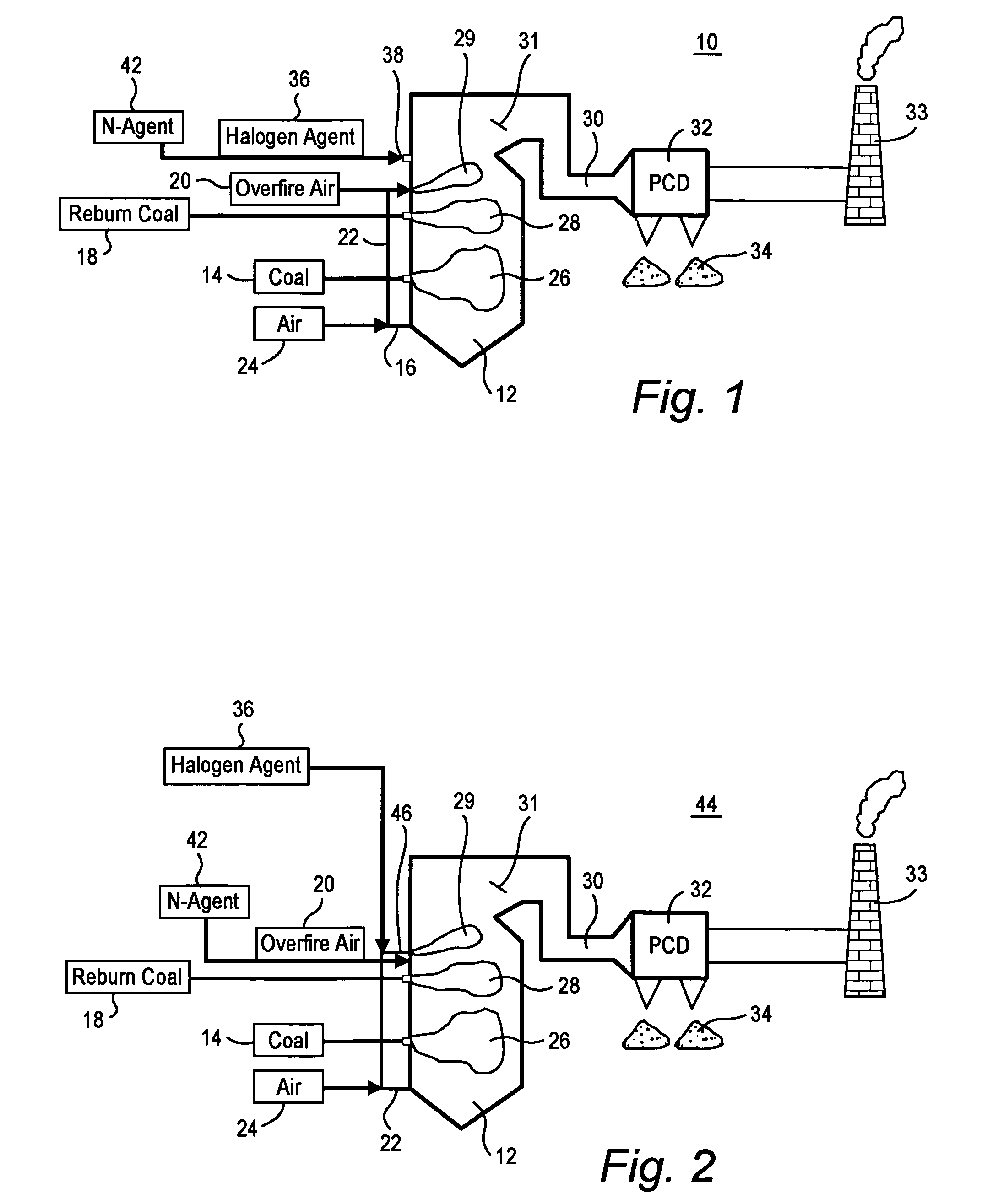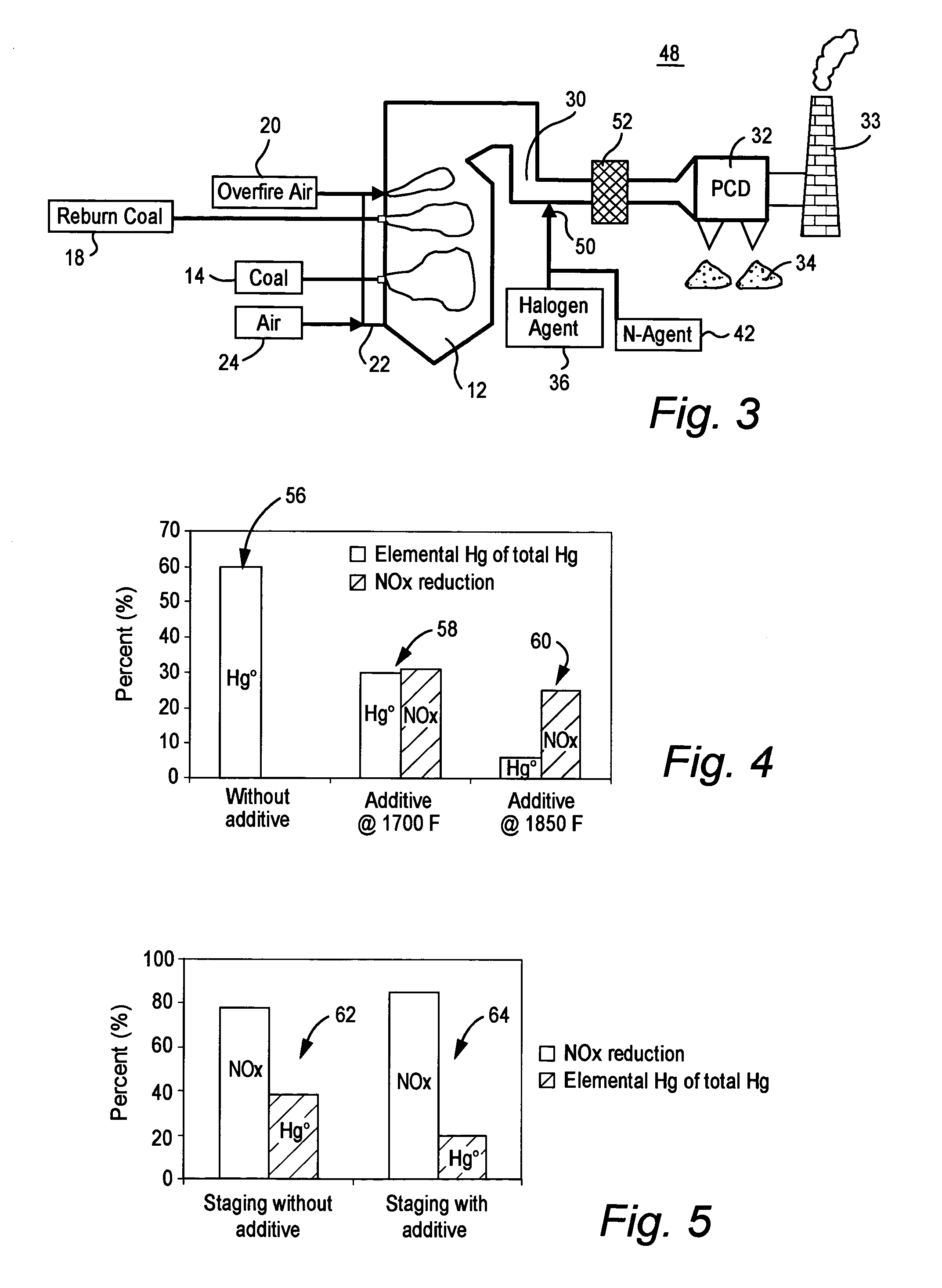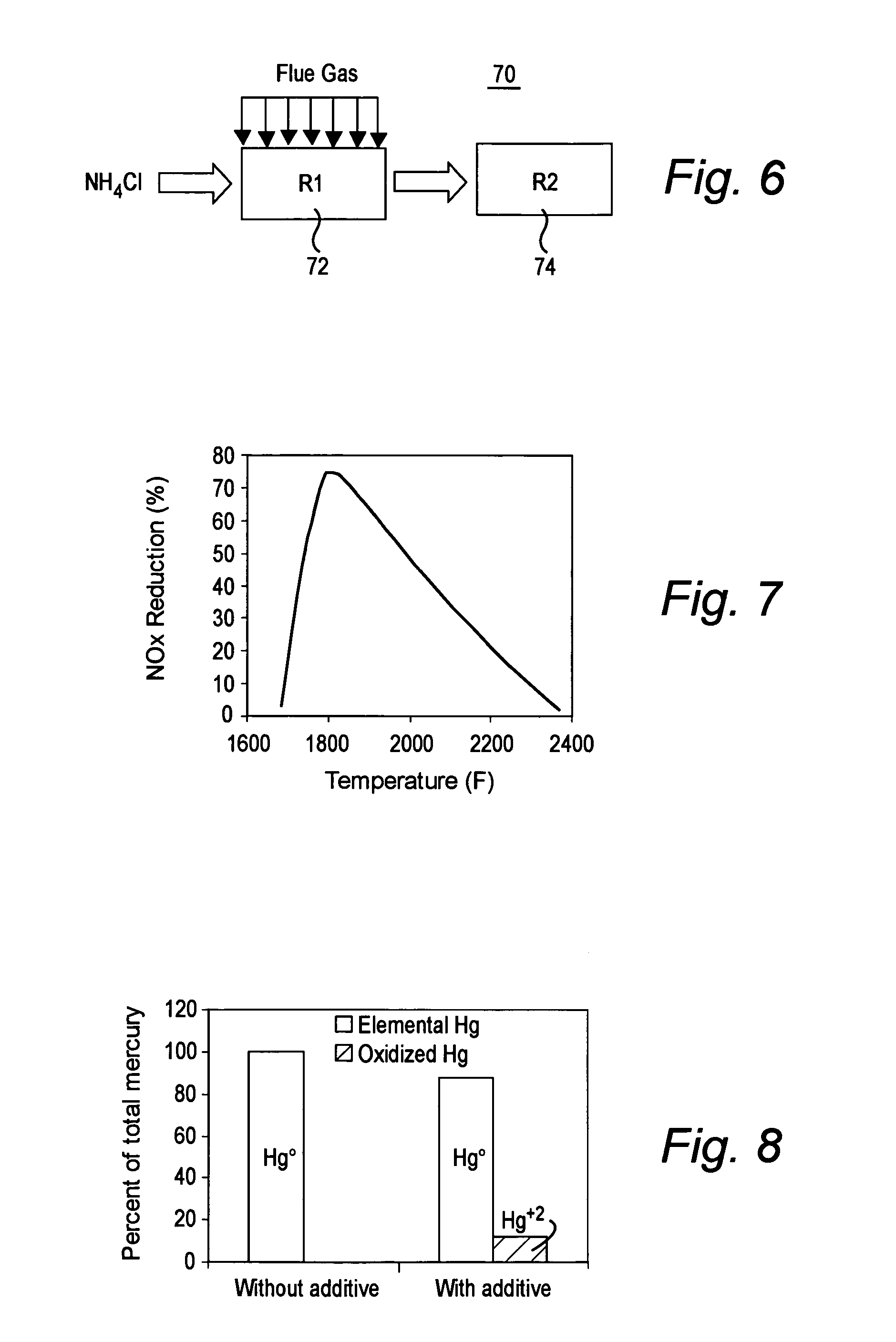Method for removal of mercury emissions from coal combustion
a technology of coal combustion and mercury emissions, which is applied in the direction of machines/engines, lighting and heating apparatus, and separation processes, etc., can solve the problems of complicated control of mercury emissions, and achieve the effect of reducing emissions and reducing mercury in gas emissions
- Summary
- Abstract
- Description
- Claims
- Application Information
AI Technical Summary
Benefits of technology
Problems solved by technology
Method used
Image
Examples
Embodiment Construction
[0020]Available mercury control technologies for coal-fired power plants tend to be more effective at removing oxidized mercury from flue gas than in removing elemental mercury. A technique has been developed to increase the fraction of oxidized mercury in flue gas by injecting an oxidizing a halogen additive, e.g., ammonium chloride (NH4Cl), NH4Br or NH4I, into the flue gas. By increasing the fraction of oxidized mercury, the halogen additive increases the amount of mercury removal by activated carbon injection, wet scrubbers and other mercury control technologies. Simultaneously, the halogen additive injection decreases NOx emissions by reducing oxides of nitrogen to molecular nitrogen.
[0021]The presence of chlorine containing compounds in flue gas is an important factor in the oxidation of mercury. Chlorine is a halogen that oxidizes mercury. Low rank coals tend to have low chlorine content, e.g., less than 100 ppm, and a high content of alkali metals. These alkali metals tend to...
PUM
| Property | Measurement | Unit |
|---|---|---|
| temperature | aaaaa | aaaaa |
| temperature | aaaaa | aaaaa |
| temperature | aaaaa | aaaaa |
Abstract
Description
Claims
Application Information
 Login to View More
Login to View More - R&D
- Intellectual Property
- Life Sciences
- Materials
- Tech Scout
- Unparalleled Data Quality
- Higher Quality Content
- 60% Fewer Hallucinations
Browse by: Latest US Patents, China's latest patents, Technical Efficacy Thesaurus, Application Domain, Technology Topic, Popular Technical Reports.
© 2025 PatSnap. All rights reserved.Legal|Privacy policy|Modern Slavery Act Transparency Statement|Sitemap|About US| Contact US: help@patsnap.com



